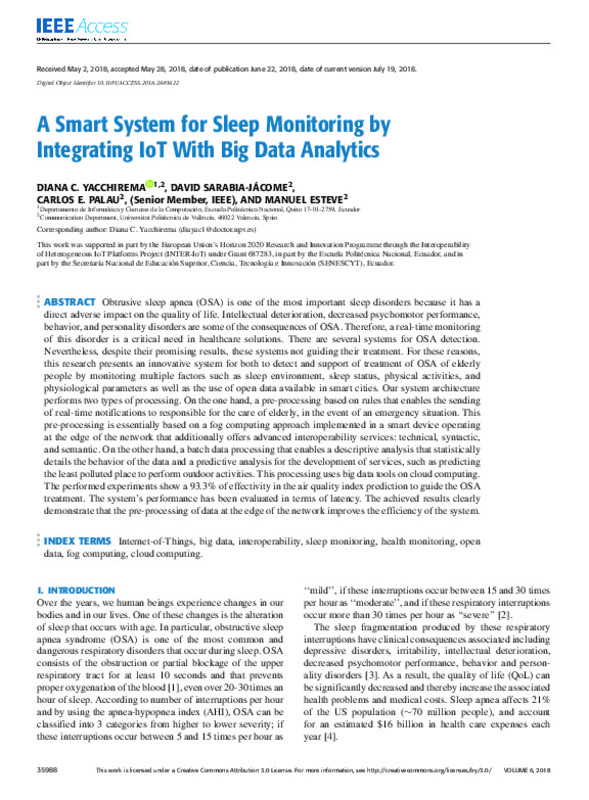JavaScript is disabled for your browser. Some features of this site may not work without it.
Buscar en RiuNet
Listar
Mi cuenta
Estadísticas
Ayuda RiuNet
Admin. UPV
A Smart System for Sleep Monitoring by Integrating IoT With Big Data Analytics
Mostrar el registro completo del ítem
Yacchirema-Vargas, DC.; Sarabia-Jácome, DF.; Palau Salvador, CE.; Esteve Domingo, M. (2018). A Smart System for Sleep Monitoring by Integrating IoT With Big Data Analytics. IEEE Access. 6:35988-36001. https://doi.org/10.1109/ACCESS.2018.2849822
Por favor, use este identificador para citar o enlazar este ítem: http://hdl.handle.net/10251/123260
Ficheros en el ítem
Metadatos del ítem
| Título: | A Smart System for Sleep Monitoring by Integrating IoT With Big Data Analytics | |
| Autor: | Yacchirema-Vargas, Diana Cecilia Sarabia-Jácome, David Fernando | |
| Entidad UPV: |
|
|
| Fecha difusión: |
|
|
| Resumen: |
[EN] Obtrusive sleep apnea (OSA) is one of the most important sleep disorders because it has a direct adverse impact on the quality of life. Intellectual deterioration, decreased psychomotor performance, behavior, and ...[+]
|
|
| Palabras clave: |
|
|
| Derechos de uso: | Reconocimiento (by) | |
| Fuente: |
|
|
| DOI: |
|
|
| Editorial: |
|
|
| Versión del editor: | http://doi.org/10.1109/ACCESS.2018.2849822 | |
| Código del Proyecto: |
|
|
| Agradecimientos: |
This work was supported in part by the European Union's Horizon 2020 Research and Innovation Programme through the Interoperability of Heterogeneous IoT Platforms Project (INTER-IoT) under Grant 687283, in part by the ...[+]
|
|
| Tipo: |
|









